Picture this: a tiny spider, no bigger than your thumbnail, stands on a leaf and begins what can only be described as the most elaborate dance routine you’ve ever witnessed. Its legs wave in perfect synchronization, its body vibrates with precision, and its colorful abdomen flashes like a disco ball. This isn’t a scene from a nature documentary’s fever dream—it’s the very real, very spectacular mating ritual of jumping spiders, one of nature’s most underrated performers.
The Peacock Spider’s Spectacular Show

When we think of impressive animal courtship displays, peacocks and birds-of-paradise usually steal the spotlight. But tucked away in the undergrowth of Australia lives a performer that puts even the most flamboyant birds to shame: the peacock spider. These tiny arachnids, belonging to the genus Maratus, have evolved some of the most intricate and colorful mating displays in the animal kingdom.
The male peacock spider’s abdomen unfurls like a kaleidoscope, revealing patterns that would make any artist jealous. Electric blues, vibrant oranges, and iridescent greens create geometric masterpieces that shift and shimmer as the spider moves. Scientists have discovered over 100 species of peacock spiders, each with its own unique color palette and dance moves.
These displays aren’t just for show—they’re a matter of life and death. A female peacock spider can literally eat her suitor if his performance doesn’t meet her standards. Talk about high-stakes entertainment.
Why Spiders Dance Instead of Fight
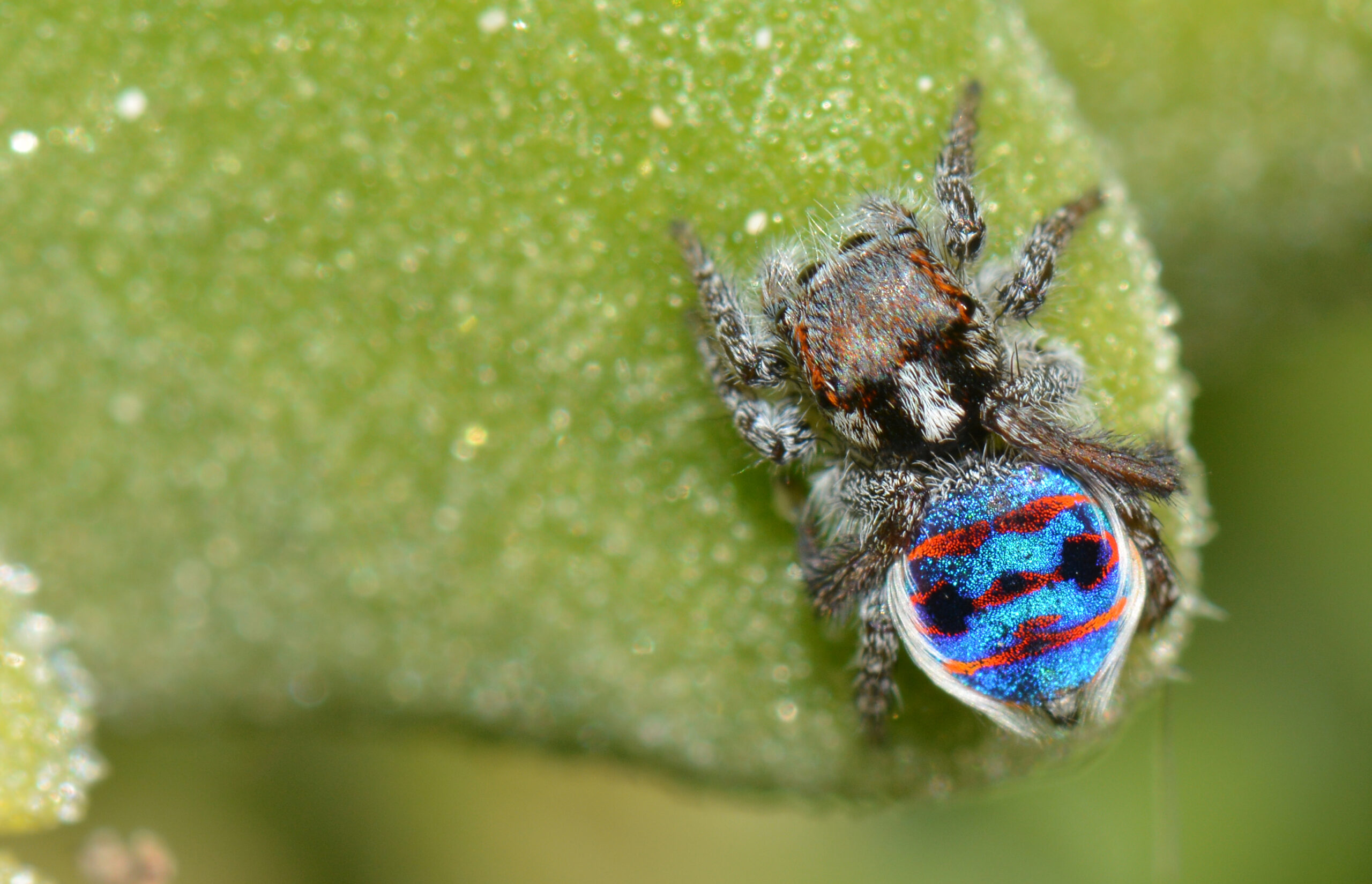
The jumping spider’s dance serves a crucial evolutionary purpose that goes far beyond simple attraction. Unlike many spider species where males risk being eaten during any encounter with females, jumping spiders have developed this elaborate courtship ritual as a safety mechanism. The dance essentially says, “Hey, I’m not prey—I’m a potential mate!”
This behavior represents millions of years of evolution solving a fundamental problem: how do you get close enough to mate without becoming lunch? The answer lies in the intricate choreography that identifies the male as a suitor rather than a snack. Each movement, each flash of color, each vibration sends a specific signal that helps the female distinguish between a mate and a meal.
The dance also serves as a fitness test. Only the healthiest, most coordinated males can pull off these complex displays. It’s nature’s way of ensuring that only the best genes get passed on to the next generation.
The Science Behind the Moves
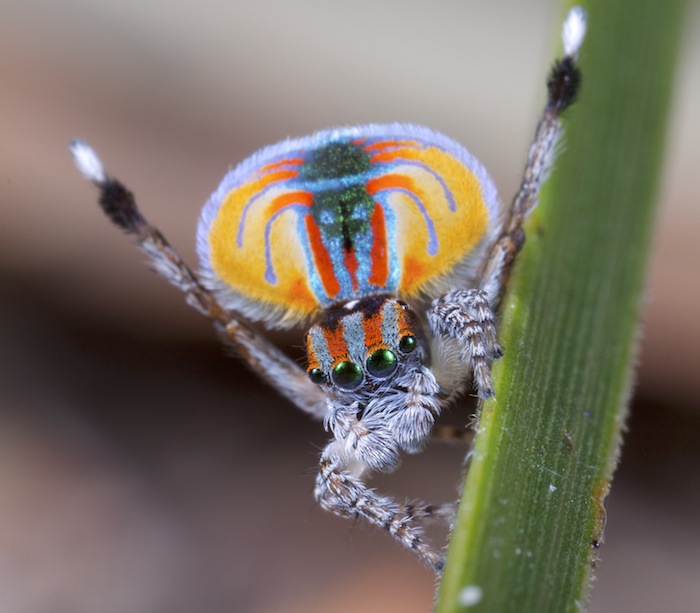
What looks like random wiggling is actually a precisely coordinated sequence of movements that scientists have spent decades decoding. Each spider species has its own “signature dance,” complete with specific leg positions, body angles, and timing patterns. Researchers have discovered that these dances follow mathematical principles, with movements occurring at specific frequencies and intervals.
The male’s third pair of legs often acts as semaphore flags, waving in patterns that create visual signals. Meanwhile, his first pair of legs might tap out rhythmic beats on the ground, creating vibrations that the female can feel through her incredibly sensitive leg receptors. It’s like a combination of sign language and morse code, all wrapped up in a dazzling visual display.
Recent studies using high-speed cameras have revealed that some of these movements happen so quickly that the human eye can’t detect them without technological assistance. What we see as a simple wave might actually be a complex sequence of micro-movements conveying detailed information about the male’s species, health, and genetic fitness.
The Role of Color in Spider Courtship
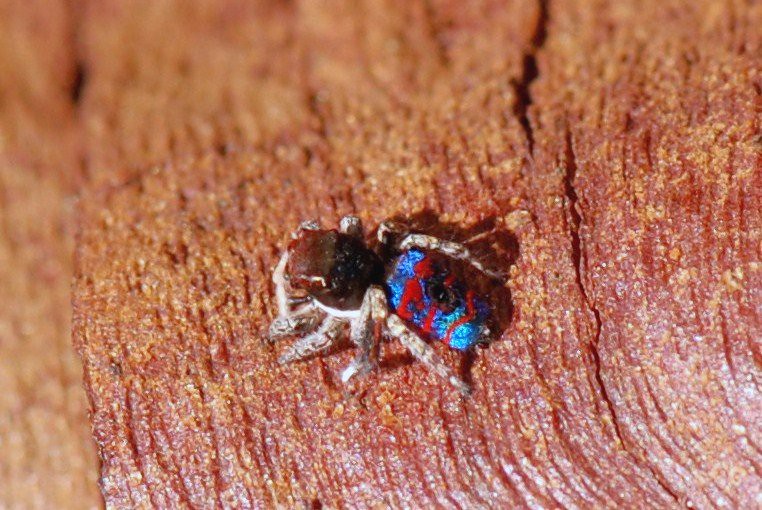
The brilliant colors displayed by male jumping spiders aren’t just for show—they’re the result of sophisticated optical engineering that rivals human technology. These spiders use two different mechanisms to create their stunning displays: pigments and structural coloration. Pigments provide the basic colors, while microscopic structures on their scales create iridescent effects that shift and change with the viewing angle.
The structural coloration works through the same principles that create the shimmer on soap bubbles or the iridescence of butterfly wings. Tiny ridges and grooves on the spider’s scales interfere with light waves, amplifying certain colors while canceling out others. This creates the metallic sheens and rainbow effects that make peacock spiders so mesmerizing to watch.
Scientists have found that different species of peacock spiders reflect light at slightly different wavelengths, creating species-specific color signatures. This helps ensure that females only respond to males of their own species, preventing wasteful cross-species mating attempts.
How Female Spiders Judge Their Suitors
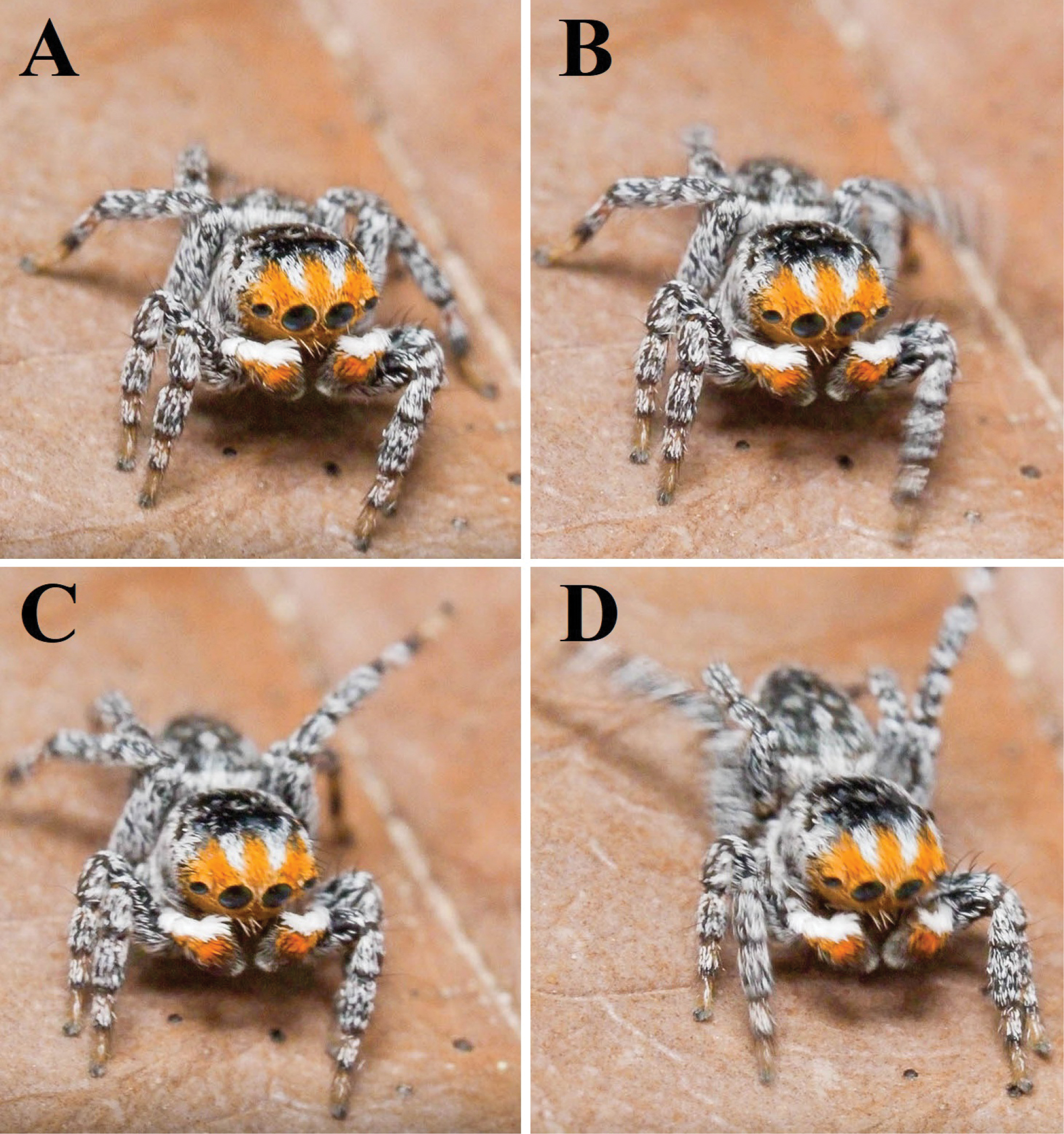
Female jumping spiders are notoriously picky customers when it comes to choosing mates. They don’t just passively watch the male’s performance—they actively evaluate every aspect of his display. Researchers have discovered that females pay attention to the speed of the dance, the precision of the movements, the intensity of the colors, and even the male’s ability to maintain his performance over time.
A female might watch multiple males perform before making her decision, comparing their displays like a talent show judge. She’ll position herself to get the best view, sometimes moving to different angles to see how the male’s colors change in different lighting conditions. If a male’s performance is subpar, she might simply walk away—or worse, attack him.
The female’s judgment isn’t arbitrary. Studies have shown that the males with the most elaborate displays tend to be healthier, have better genes, and produce more viable offspring. The female’s pickiness is actually a sophisticated quality control system that benefits the entire species.
The Evolutionary Arms Race of Attraction
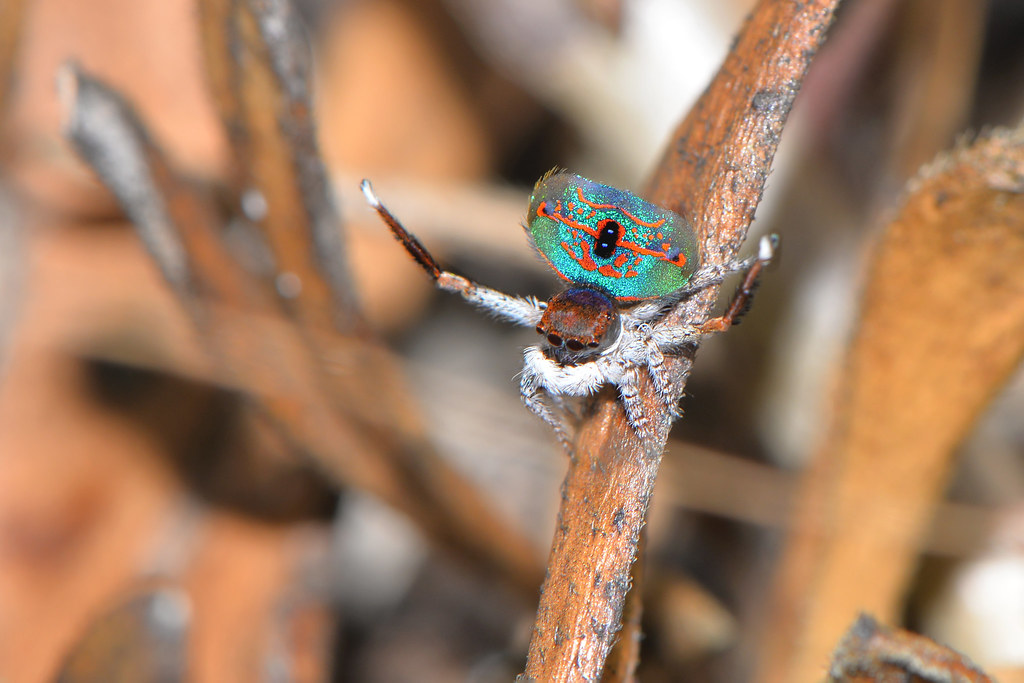
The incredible complexity of jumping spider courtship displays represents millions of years of evolutionary pressure. As females became more selective, males evolved increasingly elaborate displays to stand out from the competition. This created a feedback loop where each generation had to be more impressive than the last, leading to the spectacular shows we see today.
This process, known as sexual selection, has driven the evolution of some of nature’s most extreme traits. Just as peacocks evolved increasingly elaborate tail feathers, jumping spiders developed more complex dances and brighter colors. The males who could put on the best show had the most reproductive success, passing on their “performance genes” to their offspring.
The arms race continues today, with researchers regularly discovering new species with even more outrageous displays. Some recently discovered peacock spiders have developed colors that were previously unknown in the spider world, suggesting that evolution is still actively refining these remarkable performances.
Different Species, Different Dances

Not all jumping spiders dance the same way. Each species has evolved its own unique repertoire of moves, creating a diverse catalog of courtship behaviors that would make any choreographer jealous. The Maratus volans, for example, performs a side-to-side wave that resembles a person doing the backstroke, while the Maratus speciosus does more of a hip-hop inspired routine with rapid leg movements and body pops.
Some species have developed props for their performances. The Maratus personatus uses its enlarged front legs like pom-poms, waving them in coordinated patterns while its abdomen flashes bright colors. Other species incorporate environmental elements into their dances, using leaves or twigs as dance floors or even as part of their choreography.
The diversity of these displays reflects the incredible adaptability of jumping spiders. Each species has found its own solution to the same basic problem: how to convince a potentially dangerous female that you’re worth mating with rather than eating.
The Technology Behind Spider Vision
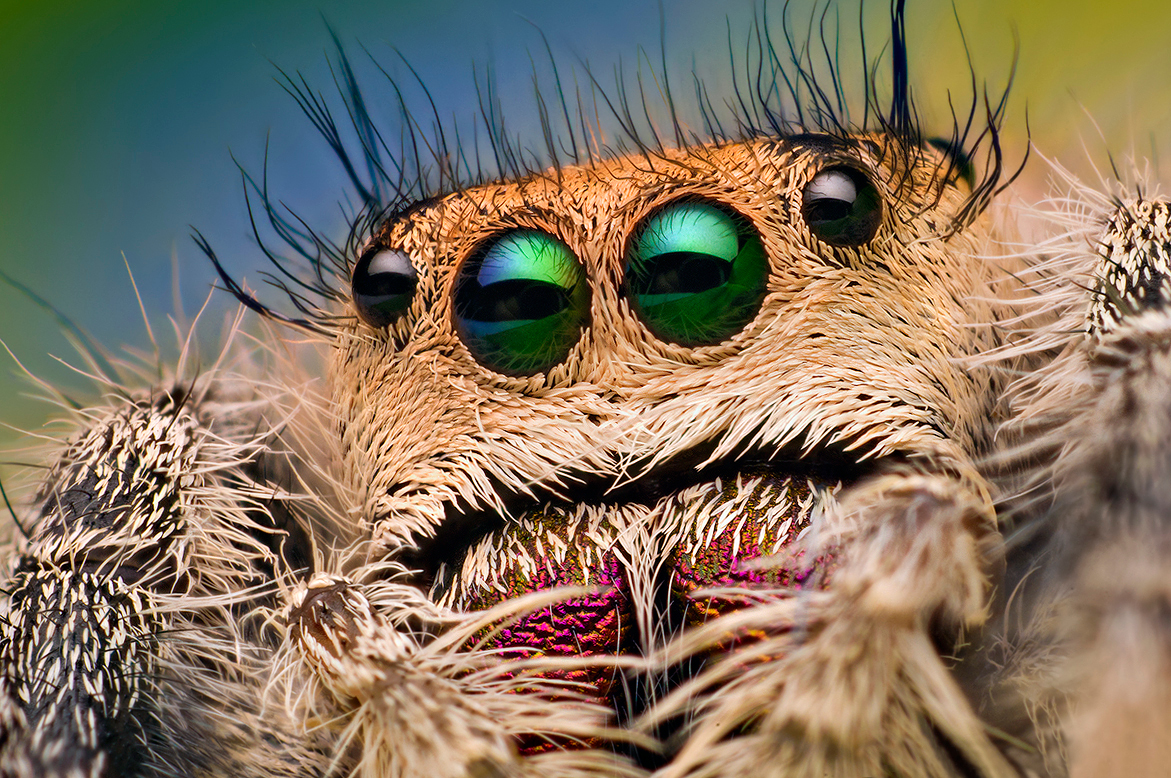
Understanding jumping spider courtship requires appreciating the sophisticated visual systems that make these displays possible. Jumping spiders have some of the best vision in the arthropod world, with eyes that can detect fine details, track moving objects, and even see into the ultraviolet spectrum. Their principal eyes work like tiny telephoto lenses, allowing them to spot potential mates or rivals from considerable distances.
The male’s performance is specifically tailored to exploit the female’s visual capabilities. The colors he displays often include ultraviolet patterns that are invisible to human eyes but clearly visible to his intended audience. The speed and frequency of his movements are calibrated to trigger the female’s motion detection systems, ensuring that his display captures and holds her attention.
Recent research has revealed that jumping spiders can even distinguish between different types of movement patterns, allowing them to differentiate between courtship displays and threat behaviors. This sophisticated visual processing is what makes their complex courtship rituals possible.
The Mechanics of the Dance
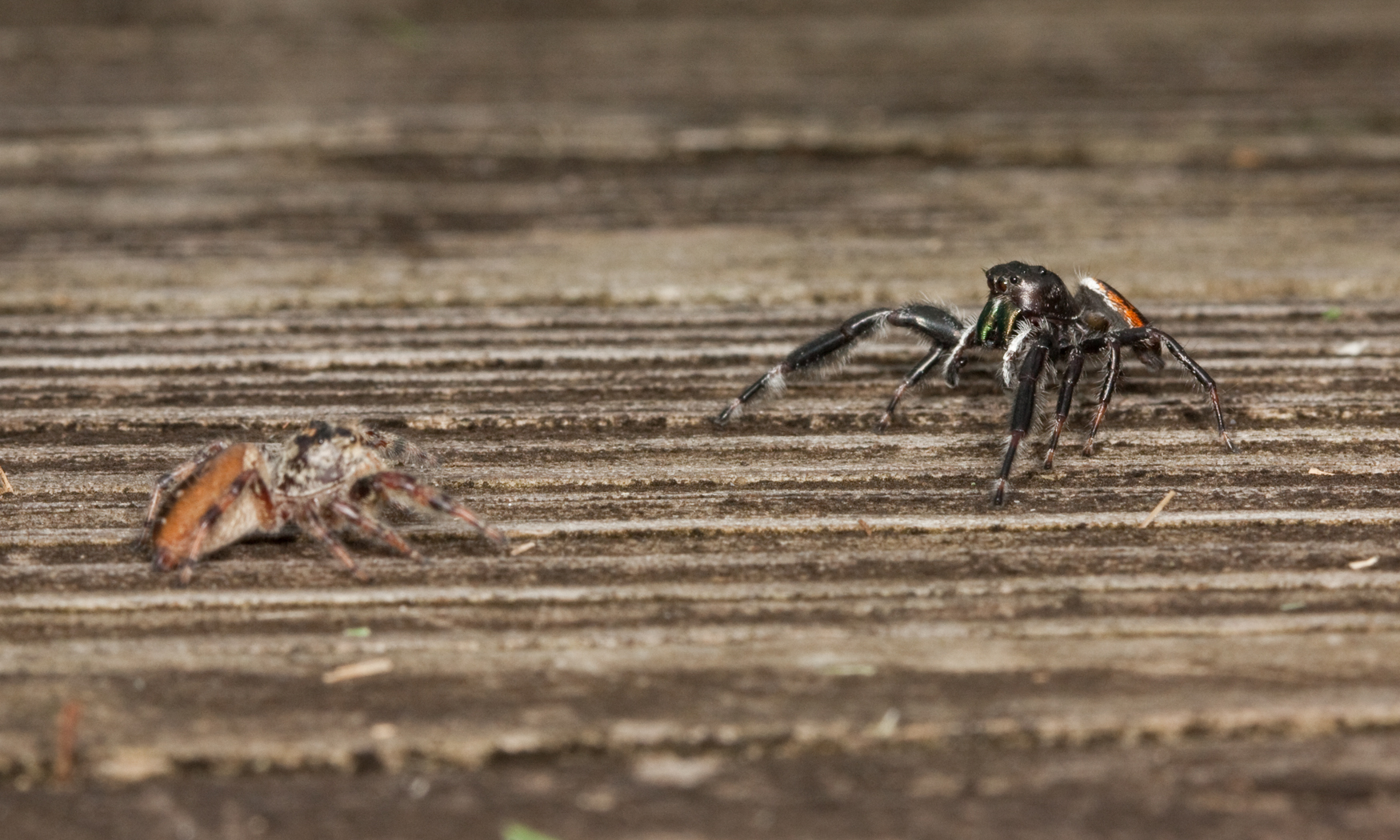
The physical act of dancing presents unique challenges for creatures with eight legs and a relatively rigid exoskeleton. Jumping spiders have evolved specialized joint structures and muscle arrangements that allow them to perform their elaborate displays without losing their balance or coordination. Each leg can move independently, creating complex patterns that would be impossible for most other arthropods.
The spider’s hydraulic system, which uses blood pressure to extend its legs, has been fine-tuned for performance. Unlike mammals, which rely on muscles to both extend and contract their limbs, spiders use muscles to pull their legs in and hydraulic pressure to push them out. This system allows for rapid, precise movements that are essential for effective courtship displays.
The timing of these movements is controlled by the spider’s nervous system, which acts like a sophisticated metronome. Different neural circuits control different aspects of the display, allowing the spider to coordinate multiple movement patterns simultaneously while maintaining the precise timing that makes the dance effective.
What Happens When the Dance Fails
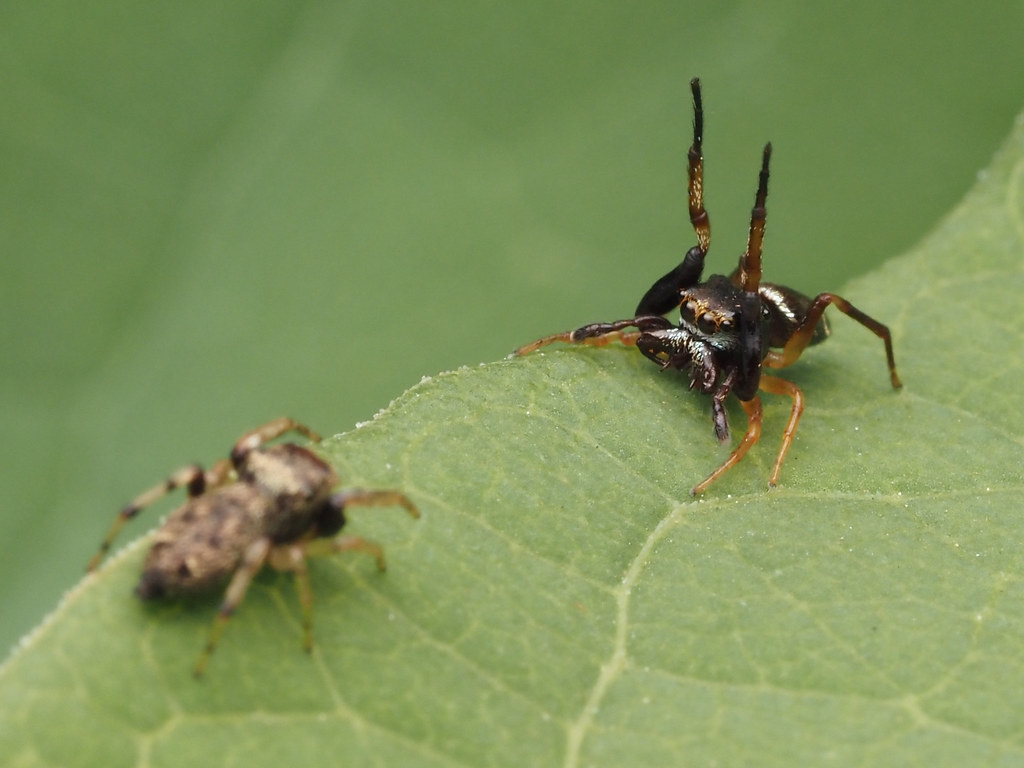
Not every courtship display ends happily. In fact, the majority of male jumping spiders fail to impress their intended mates, leading to rejection at best and becoming dinner at worst. When a female decides that a male’s performance is inadequate, she has several options. She might simply ignore him and walk away, leaving him to try again with another female.
However, if the male has approached too closely or his signals are misinterpreted as aggressive rather than romantic, the female might attack. Female jumping spiders are typically larger than males and are well-equipped to defend themselves. A failed courtship can quickly turn into a life-or-death struggle, with the male having to use his agility and speed to escape.
Some males have evolved backup strategies for dealing with rejection. They might retreat to a safe distance and attempt a different dance routine, or they might wait for the female to be distracted by prey before trying again. The most persistent males might even follow a female for hours or days, waiting for the right moment to make their move.
The Role of Vibrations in Spider Communication
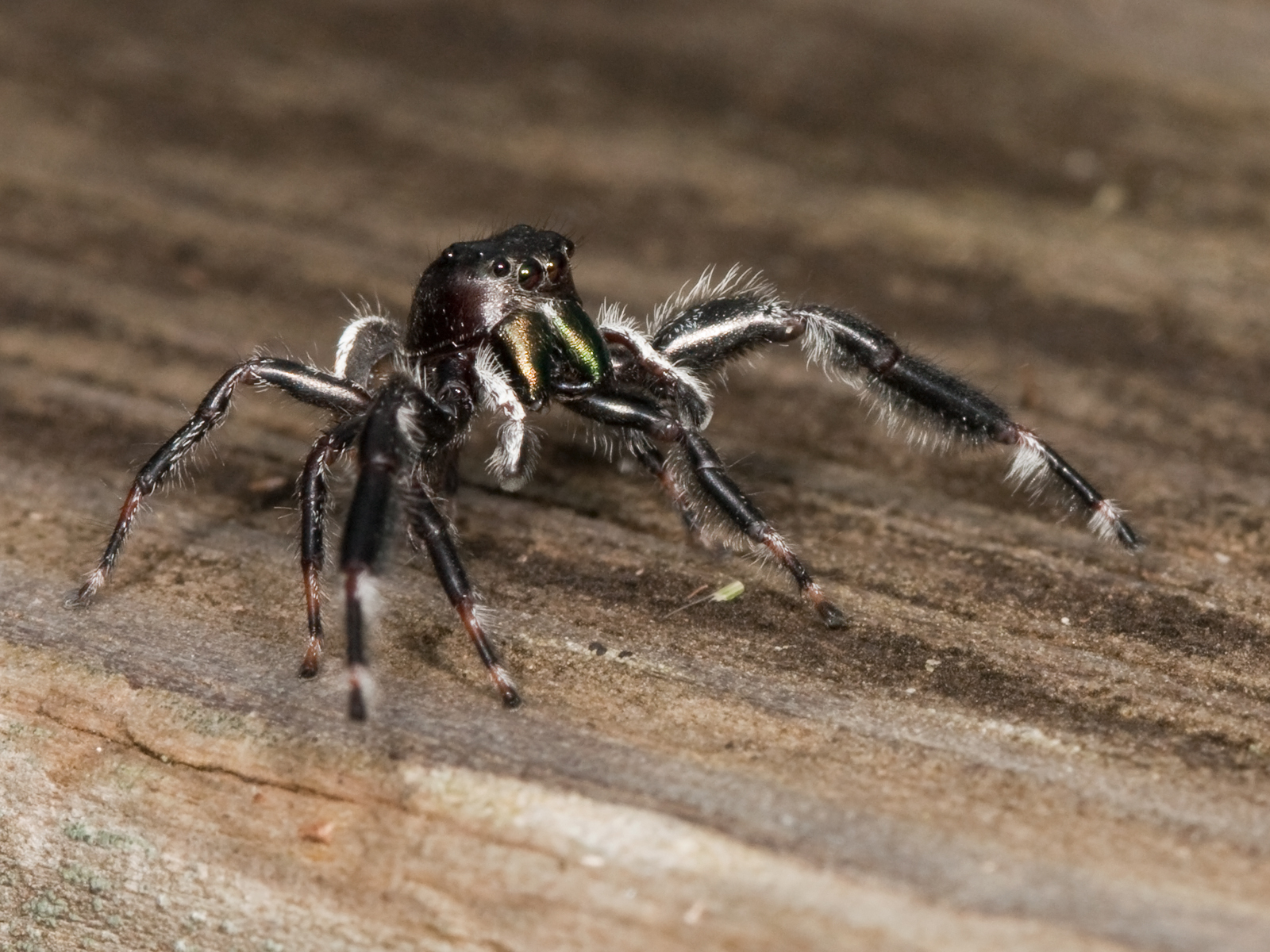
While the visual aspects of jumping spider courtship get most of the attention, vibrations play an equally important role in these complex displays. Males create vibrations by drumming their legs on the ground, tapping their bodies against surfaces, or even buzzing their flight muscles. These vibrations travel through the substrate and are detected by the female’s incredibly sensitive mechanoreceptors.
Each species has its own vibrational signature, creating a form of seismic communication that complements the visual display. The frequency, amplitude, and rhythm of these vibrations convey information about the male’s species, size, and condition. Some males even coordinate their vibrations with their visual displays, creating multimedia presentations that engage multiple senses simultaneously.
Research has shown that females can distinguish between different vibrational patterns with remarkable precision. They can detect subtle differences in timing and intensity that help them identify high-quality mates. This vibrational communication is especially important in environments where visual displays might be obscured by vegetation or poor lighting conditions.
Human Fascination with Dancing Spiders

The discovery of jumping spider courtship displays has captured the imagination of people around the world, transforming these tiny arachnids from objects of fear into subjects of fascination. YouTube videos of peacock spider dances have garnered millions of views, and these creatures have become unlikely internet celebrities. Their performances have even inspired artists, musicians, and dancers to incorporate spider-inspired elements into their own work.
This shift in perception represents a broader change in how humans view spiders. Rather than seeing them as threatening creatures to be feared or eliminated, people are beginning to appreciate their incredible complexity and beauty. The jumping spider’s courtship displays have become a powerful tool for conservation education, showing people that even the smallest creatures can possess remarkable abilities.
Scientists have also found that studying these displays provides insights into fundamental principles of communication, evolution, and behavior that apply to many other species. The jumping spider’s dance is not just entertainment—it’s a window into the deeper workings of nature itself.
Conservation and Future Research
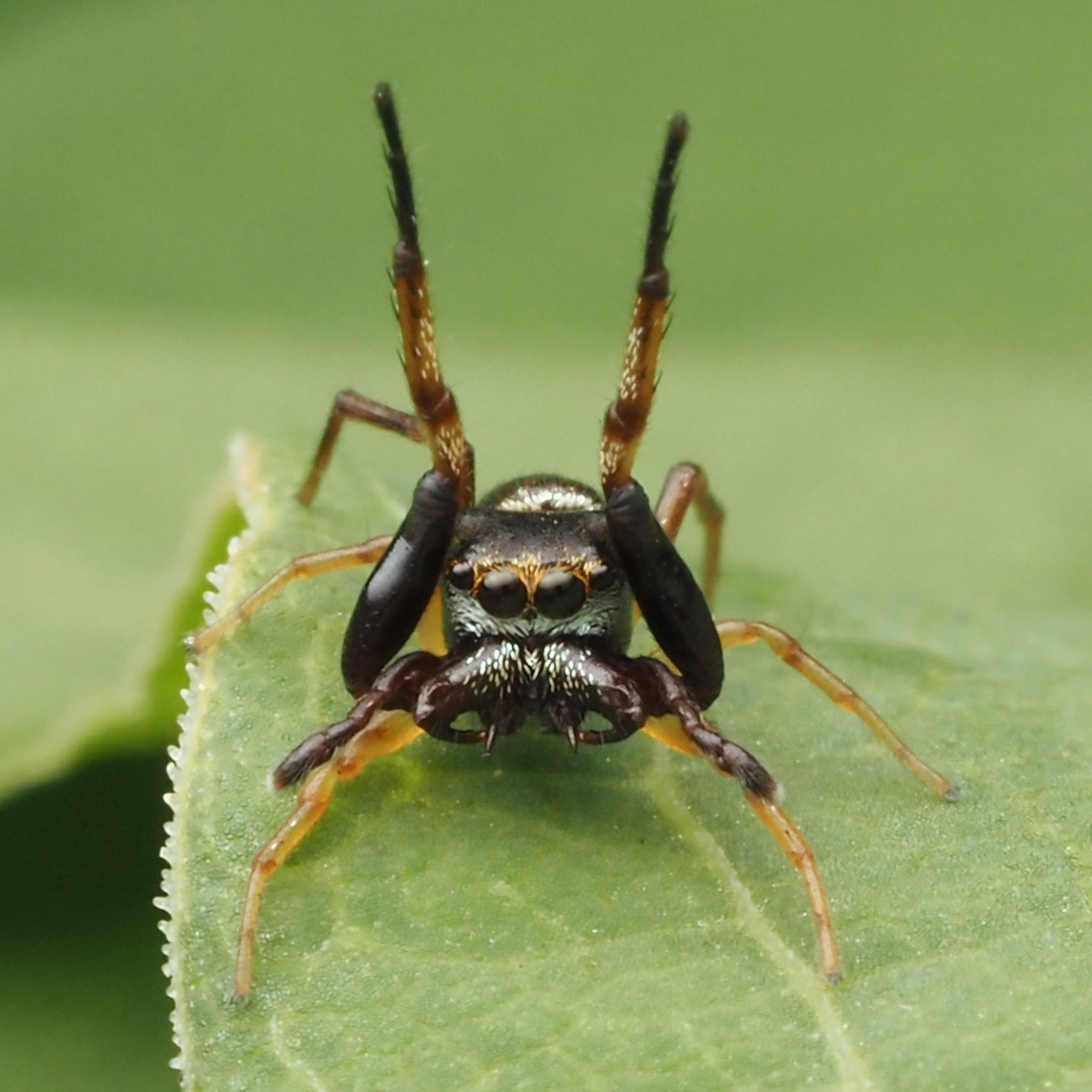
As human development continues to encroach on natural habitats, many jumping spider species face increasing pressure from habitat loss and environmental degradation. The specialized environments where these spiders live and perform their courtship displays are often the first to be cleared for agriculture or urban development. This makes conservation efforts particularly important for preserving these remarkable behaviors.
Researchers are working to document as many species and their unique dances as possible before they potentially disappear. New species are still being discovered regularly, each with its own distinctive courtship ritual. Scientists estimate that there may be hundreds of jumping spider species yet to be described, each potentially offering new insights into the evolution of complex behaviors.
Future research aims to understand the genetic basis of these courtship displays, potentially revealing how such complex behaviors evolve and are maintained across generations. Advanced imaging techniques and genetic analysis tools are opening new windows into the world of spider communication, promising even more spectacular discoveries in the years to come.
Conclusion
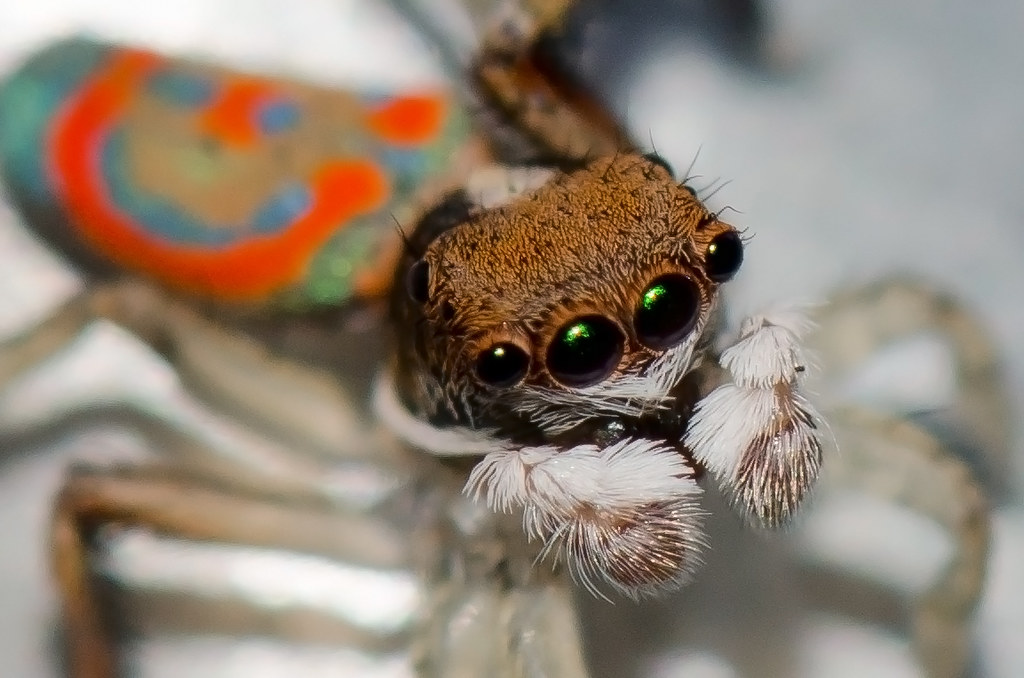
The next time you encounter a tiny jumping spider in your garden or on your windowsill, remember that you’re looking at one of nature’s most accomplished performers. These remarkable creatures have evolved some of the most sophisticated courtship displays in the animal kingdom, using a combination of visual artistry, precise choreography, and complex communication that rivals anything humans have created.
Their dances remind us that beauty and complexity exist at every scale in the natural world. From the intricate patterns on a peacock spider’s abdomen to the precisely timed movements of its courtship display, these tiny performers demonstrate that evolution can produce wonders that exceed our wildest imagination.
The jumping spider’s dance is more than just a mating ritual—it’s a testament to the power of evolution to create solutions that are both functional and beautiful. These spiders have turned the dangerous act of courtship into an art form, proving that even in the smallest creatures, nature finds a way to create something extraordinary. What other hidden performances might be taking place in the natural world right under our noses?

